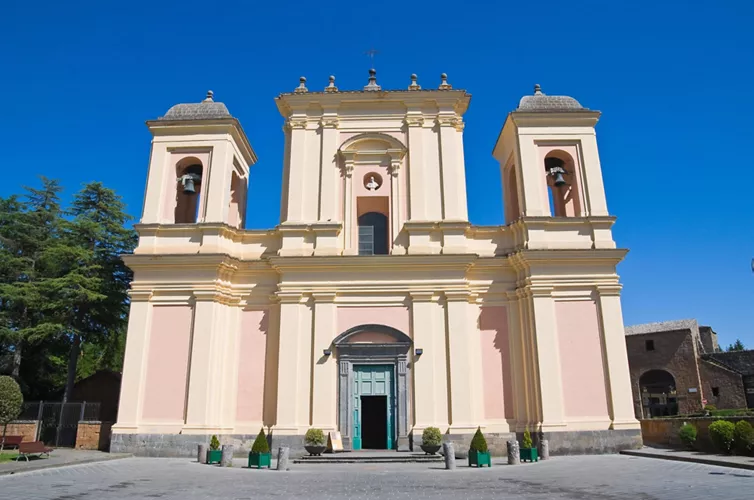This content was automatically translated. View the original text.

Overview
Acquapendente and the Cathedral of the Holy Sepulchre
Acquapendente, a pretty town in northern Lazio, is called the “Jerusalem of Europe” because of the presence, in the cathedral's admirable crypt, of a shrine that recalls the Holy Sepulchre in the holy city, where some stones bathed in the blood of Christ brought by the crusaders are said to be kept. An important stop along Via Francigena, Acquapendente is located in a fascinating naturalistic area, the Monte Rufeno Reserve.
The Crypt of Wonders
The Cathedral of the Holy Sepulchre in Acquapendente houses one of the most important Romanesque crypts in Italy dating back to the 11th century, a particularly evocative and cosy environment with 24 columns dividing the space into nine naves covered by barrel vaults. The columns are adorned by capitals with zoomorphic figures juxtaposed with a wide variety of birds, plant forms and ram's heads. In the centre of the crypt, a double flight of steps carved into the rock allows you to reach the sacellum, which is very similar in shape to that of the Holy Sepulchre in Jerusalem and houses the sacred relics.
From the 9th century onwards, the custom of creating small chapels commemorating Christ’s burial place became widespread in Europe. But why is the oldest one in Acquapendente? The legend has it that Matilda of Westphalia (895-968 AD), mother of Emperor Otto I, on her way to Rome to build a church dedicated to the Holy Sepulchre, was forced to stop in Acquapendente when the mules carrying a load of gold to finance the undertaking did not want to move on. The following night Matilda dreamt that there was the place to build the church.
Acquapendente, land of water and castles
Pilgrims on the Via Francigena have been kneeling in the Acquapendente crypt for centuries and the influx continues to this day. Near the cathedral, The House of the Pilgrim still welcomes the faithful along the road to Rome. In the city, you can admire some elegant fountains, such as the Rugarella fountain and the Rigombo (or Mascheroni) fountain, where the waters of the area flow from. The very name Acquapendente refers to the presence of small waterfalls that flow into the Paglia river.
You can see the City Museum, spread over three locations, the most interesting of which is the Palazzo Vescovile (Bishop's Palace) where a section dedicated to the Via Francigena is housed, and the curious Cordeschi amphitheatre (1938), reminiscent of an Elizabethan open-air theatre, is very active during the summer. To make the most of the beautiful countryside, it is worth visiting Torre Alfina, a hamlet 12 km from Acquapendente, one of the most beautiful villages in Italy for its conspicuous castle of medieval origin but renovated in neo-Gothic style by the Sienese architect Giuseppe Partini (it has recently been opened for visits) and for the village of stone houses that emerges like a vision from the Bosco del Sasseto, rightly called the “fairy forest”.
Monte Rufeno Reserve
The Julia de' Jacopo tower in the historic centre of Acquapendente houses the visitor centre of the Monte Rufeno Natural Reserve, one of the first reserves in Lazio and well equipped for various types of excursions, with many trails in the state forests. Accommodation can be found in farmhouses restored by the park's management body.
The Sentiero dei Briganti (Trail of the Brigands) begins from the reserve, rounds Lake Bolsena, and descends into the Latium Maremma. With its decentralised geographic location and low human population, the reserve has allowed various species to reproduce continuously. Today, it is a place where deer, badgers, porcupines, squirrels, martens, various birds of prey and even wolves can be seen in the wild. A place of serene beauty and naturalistic value, less than two hours from Rome.